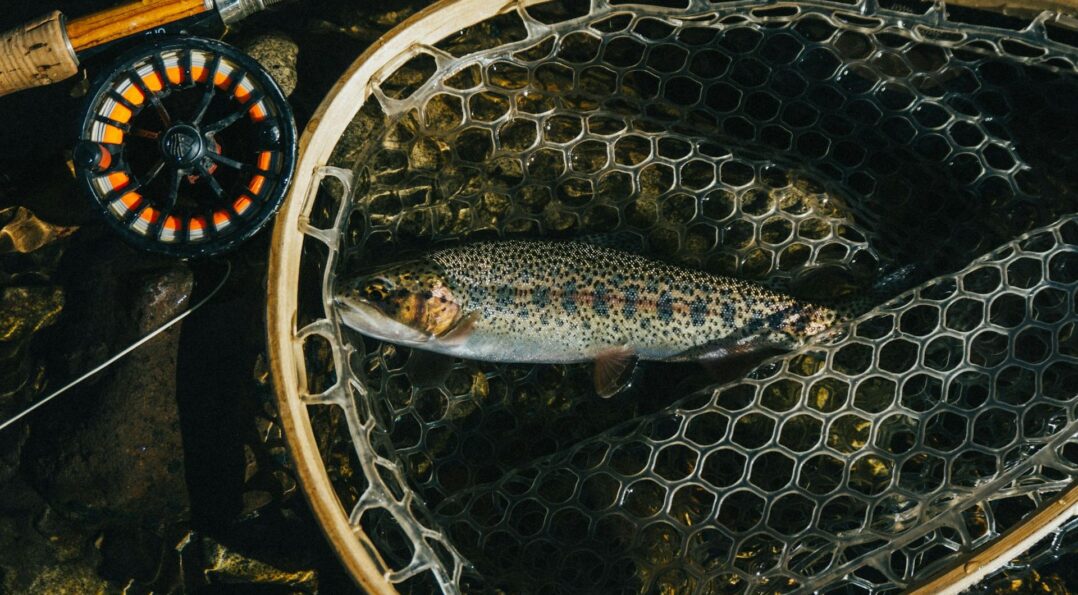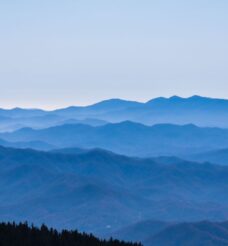The history of this fine fishery near Helen Ga can be traced back to the Native Americans as can be explained by the evidence of fish traps, wedges of stacked stone that covers the width of the river. This all shows the inventiveness of the native people. There are also multiple locations where these fish weirs are placed in some of the best fishing locations on the River between the Lake Blue Ridge dam and McCaysville on the Tennessee border. These fish traps have survived years of rushing water. Trout were not likely the forage for the at his time because the river was most likely a warm-water fishery before the construction of Lake Blue Ridge.
History Of The Toccoa
These fish traps although outdated create an awesome platform to wade out on and cast a fly to rising trout in the evenings. What a magical sight to see these beautiful trout rising and think about the Native Americans of old that used to walk these same banks in search of the same fish we are after. There is a great deal of history on the Toccoa River and it has not been left behind. Being in close proximity to Helen Ga there are many cabin rentals available to stay in while adventuring to this magical river.
River Hatches
Many times the hatches of midges become so dense that they could be called a swarm. These insects congregate together in the evenings to breed and lay there eggs. It is a great time for fly-fishermen to take advantage of the trout that wait below for one of these tasty insects to light on the water. Granted there are millions in the air and as soon as they are ready to lay there eggs. The female will spread her wings out flat on top of the water and drop her eggs. This would be called a spinner fly and the fly imitation pattern is tied for this exact same scenario.
The trout will key in on this stage in the insects life. So you know when they insects are congregating in these breeding balls in the air that the trout are most likely feeding on the spinners. The difficulty lies in the size of the flies. They are normally a size 22 hook. And this is just larger than the very front tip of your pinky finger. You can imagine how difficult it is just to thread the hook with fishing line much less see it on top of the water. This is why most fly-fishermen will use the spinner fly as a dropper fly and a slightly larger dry fly attached above so that they have a location to look in while the flies drift along the water.
Sipping Trout

Trout usually sip this stage of fly right off of the top of the water so it can be very difficult to see their strike. It is different from when they jump all the way out of the water like they do when chasing down an emerging caddis. This stage is such a violent strike because the insect is taking off for flight instead of resting on the water to expire. And it can be identified very easily because the trout will be jumping all around you. Many times when they take your emerger fly in this scenario they will hook themselves because of their momentum.
Tiny Dry Flies
On the other hand when fishing with the tiny midges either you have another attractor pattern tied to the midge or you must look very carefully for the trout to rise. Then you put low light conditions into place and it is even more difficult to see the rise. Most of the time when I am in this situation I will make shorter casts and the keep a close eye on the end of my fly line so that I can see the general area that the trout will rise. It is important to have a headlamp with you in these scenarios not only for tying on flies in low light conditions, but also to find your way out of the river and back safely to your vehicle.
Wading Locations
On the Toccoa River near Helen Ga there are only a few main sections that are wadable for fisherman that are looking to be up close in personal to the fish rather than taking a float trip. The first wadable location is just below the Blue Ridge Lake Dam a Tammen Park. The second is seven miles downstream at Curtis Switch bridge, and then third is another five or six miles down the river at Horshoe Bend Park. All of these locations allow for wading, but it is extremely important to be aware of the rising tides. Water releases from the Blue Ridge Dam are very unreliable. The predicted release schedules are published online and are available by phone, but TVA is serious when they say that the river can rise unexpectedly and there is no siren to warn fishermen.
These rising waters can actually be very positive for fishermen as well. When the extra release of cold water comes into the river the trout actually become more active. This is especially true during the summer.
Are you ready to take on the Toccoa River trout?







